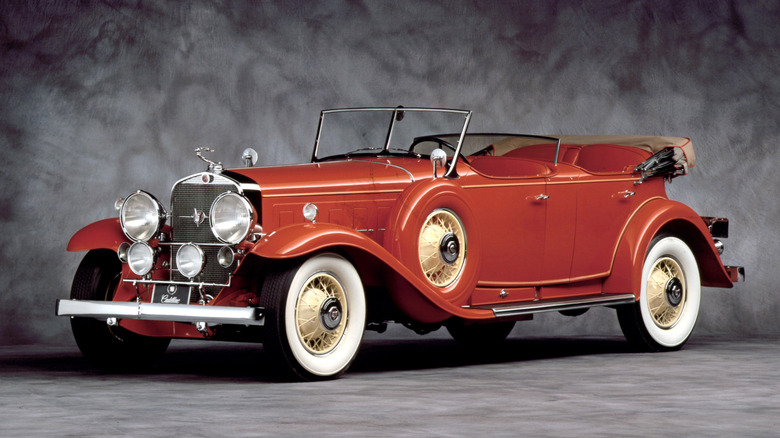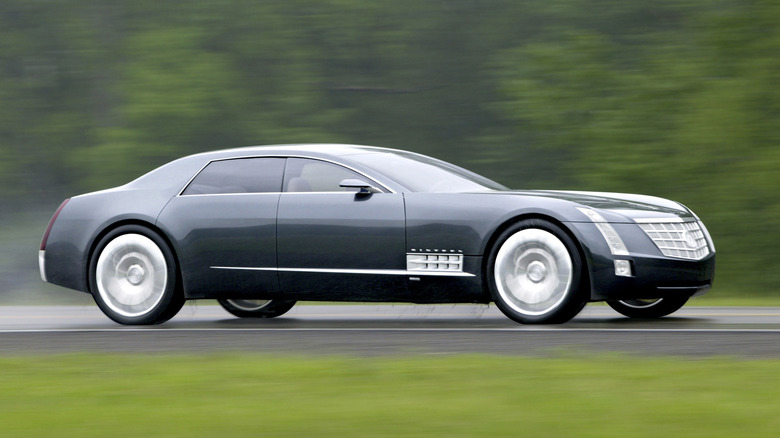One Of Cadillac's Most Ambitious Engines Is Also One Of Its Most Iconic
Even though Cadillac only briefly offered V16 vehicles for a few years in the 1930s, this remained a defining moment for the brand for many decades. It was available as the top-of-the-line power plant for Cadillac's most luxurious models, and it offered unparalleled smoothness, refinement, and performance for the era.
Cadillac began developing its V16 in the late 1920s, and the finished production unit was ready by 1930. The poster vehicle for this new engine was the Cadillac Series 452, a luxurious extended-wheelbase model meant to show the manufacturer's technical prowess.
The engine had a 7.4-liter displacement (452 cubic inches), a 45-degree angle between the two banks of eight cylinders, and initially produced around 135 horsepower. This increased over time, and the same engine was closer to 185 horsepower by the end of production.
But the V16 wasn't just a big engine with many cylinders. It also featured several technical innovations, including using overhead valves with hydraulic lifters, which was rare in the 1930s. The engine itself was made out of high-quality materials, and the tolerances were smaller than in other more rudimentary engines in production at the time.
Cadillac stopped producing this engine in 1937, but it was reintroduced one year later with a smaller displacement of 7.1 liters (431 cubic inches). It still provided 185 horsepower and was also available with a Hydra-Matic automatic transmission, which did not exist when the engine was first launched. It was a perfect fit for the torquey nature of the V16.
Remarkable Cadillac V16-Powered Creations
The V16 was the engine of choice for the wealthiest Cadillac customers, many of whom only ordered the rolling chassis from the manufacturer and had the bodywork custom-made by a coach builder. Many V16-engined Cadillacs that survived over time have custom bodies and are one-offs.
Some were created by Fleetwood, which in the 1930s was Cadillac's in-house coachbuilder and made some remarkably opulent cars. LeBaron also made bodies for long-wheelbase V16 Cadillacs, but some of the most striking-looking bodies came from outside America. The Fleetwood-built body most commonly associated with the V16 is the 1940 Cadillac Series 90 Town Car by Fleetwood. It rode on a huge 141-inch (3.58-meter) wheelbase and measured 21.3 feet from tip to tail, giving ample room for passengers in the fully covered rear section (the driver's area didn't have a roof).
One of the most iconic V16-engined Cadillacs is the 1937 Cadillac V16 Hartman Cabriolet, a dramatic 22-foot (6.7-meter) two-door convertible. Its gorgeous Art Deco body was crafted in Lausanne, Switzerland, by Carrosserie Willy Hartmann, and it is closer in style to Figoni & Falaschi's one-off Delahaye 165, considered one of the prettiest pre-war cars ever made.
Even though Cadillac ceased production of the V16 in 1940, it revived the name for a one-off concept unveiled in 2003. The Cadillac Sixteen had a 13.6-liter V16 engine with an output of exactly 1,000 horsepower and 1,000 lb-ft of torque. It's regarded as one of the best Cadillac concept cars ever.

